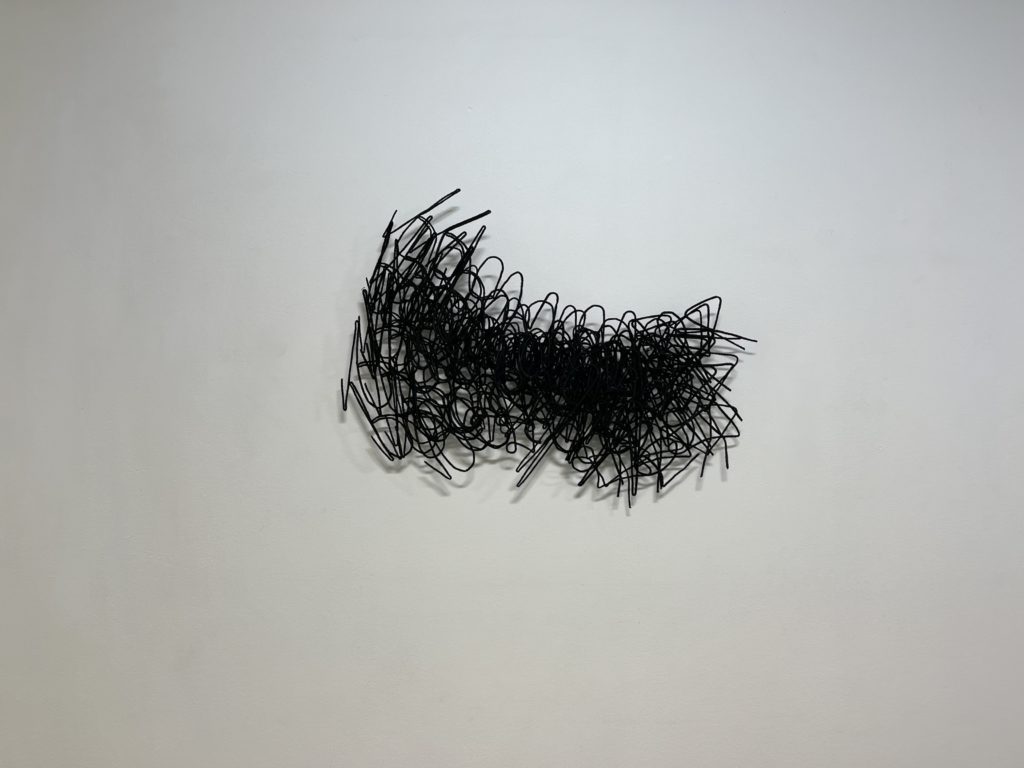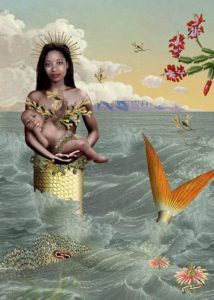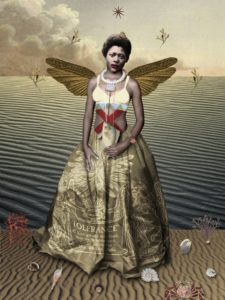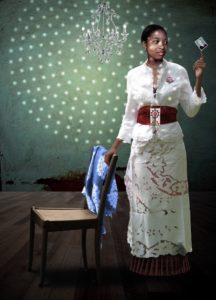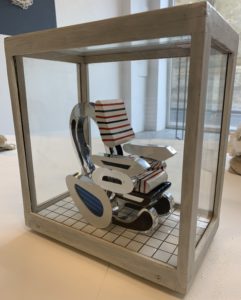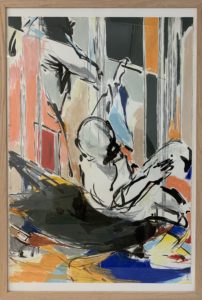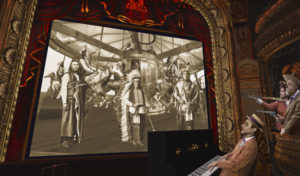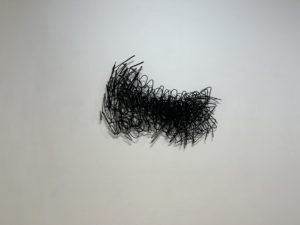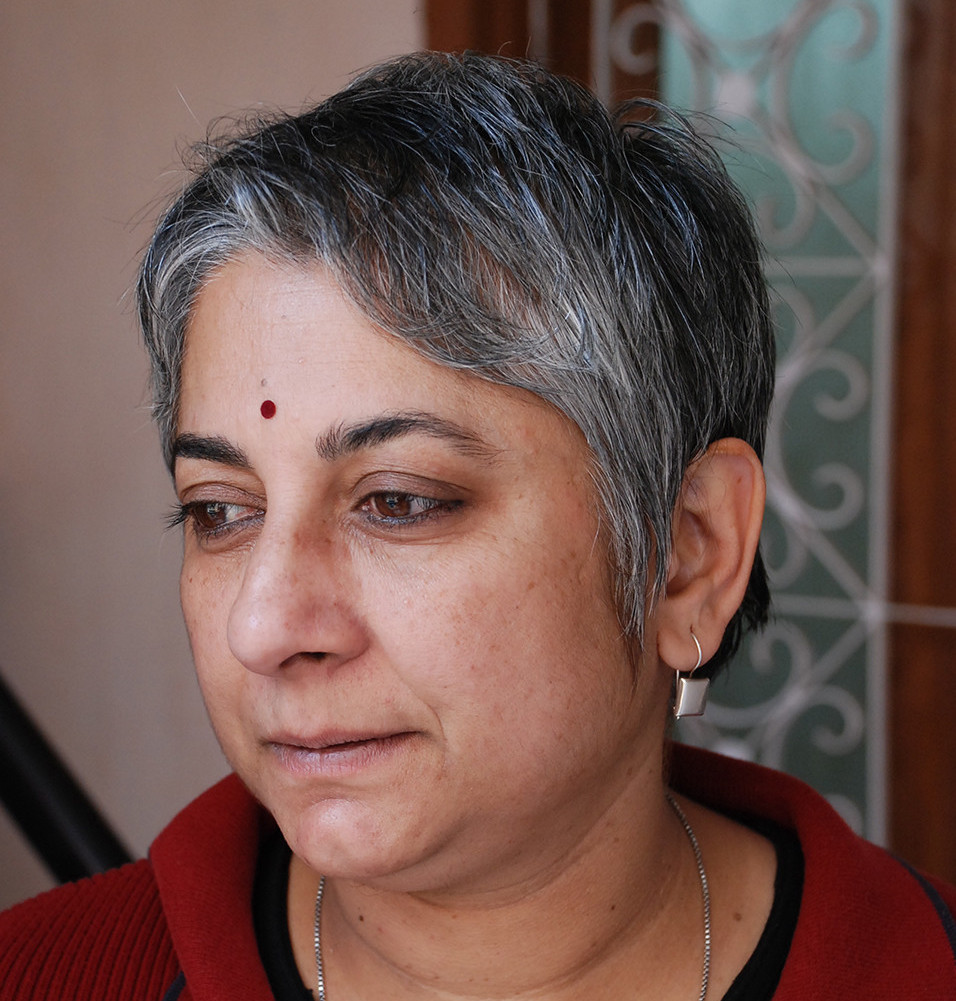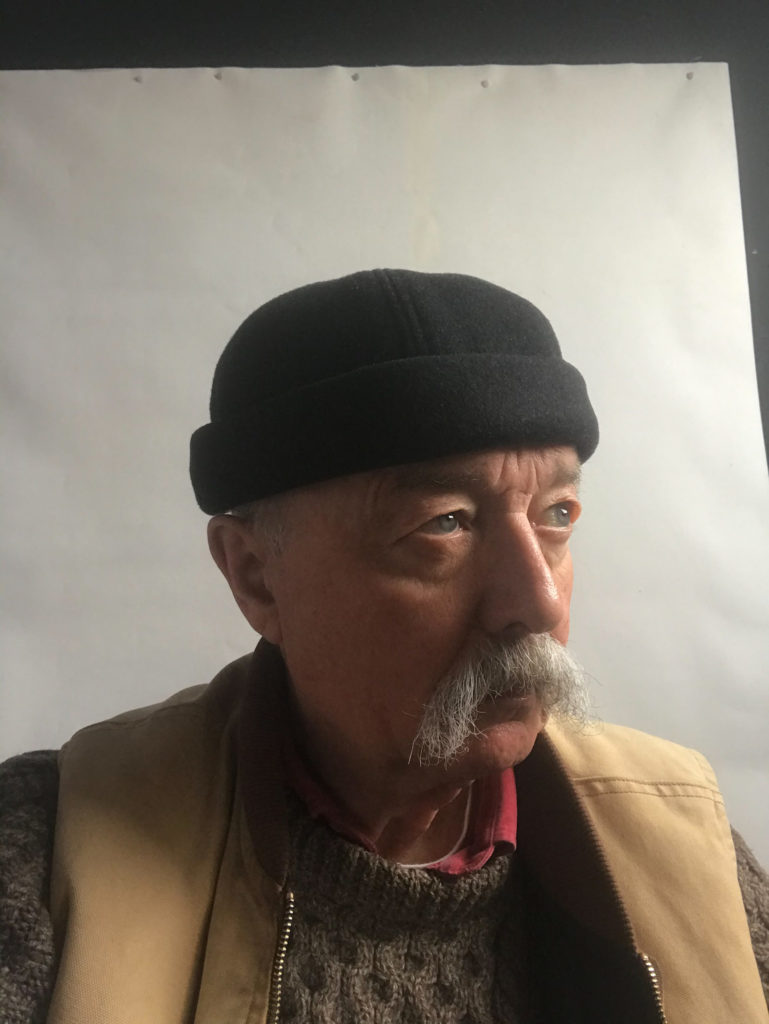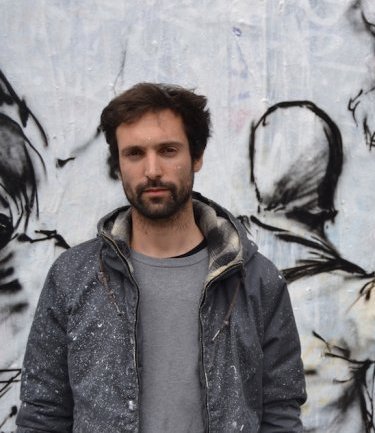EXHIBITION
Pume BYLEX was born in 1968 in Kinshasa, DRC, where he lives and works. He is a poet, architect, engineer and artist who makes his world of tomorrow, the world of his own measure. A sapper, he invented the growing shoe, a utopian, the ear chair.
Born into a family of craftsmen, he attended secondary school and received a diploma as a teacher, a profession he decided not to follow and assumed a different destiny.
Fascinated by the sciences, he observed film projections and eventually acquired one, which set him on the path to creation and he became an artist. All his codes were already defined in a few years in the different works he produced, armchairs, desks, shoes, his manual windows that protected precious objects and colour codes.
Following his first trip to Paris in 1997 for the group exhibition «Suites africaines» at the Couvent des Cordeliers, he participated in a series of prestigious exhibitions including «Partages d’exotsimes» by Jean-Hubert Martin (Lyon Biennale, 2000), Africa Remix at the Centre Pompidou, the Kunst Palace in Düsseldorf, Hayward Gallery in London, Mori Art Museum in Tokyo and Moderna museet in Stockholm.
In 2017, an entire room was dedicated to him in «Afriques Capitales» at the Grande Halle de la Villette (proposed by Dominqiue Fiat, curated by Simon Njami). Bylex represents the universe he creates and he therefore associates it with his first name Pume.
Anita Dube, born in Lucknow in 1958, began her career as an art historian and critic. Her photographs, sculptures and installations are imbued with concepts as diverse as memory and social history or mythology. Her approach to art leads her to go beyond normative barriers and to question the boundaries of territory. Working with found objects, Dube embodies the idiosyncratic nature of recycling in Indian culture. «In India, we keep everything, we keep everything to reuse it. The logic of capitalism is to have more and more, so excess creates waste,» says the artist.
In her own way, she agitates the principles of reappropriation (assimilation, quotation, bringing together past and present forms). She adds a more anthropological veneer, at least more in tune with societal reality.
She develops her own aesthetic based on the use of heterodox, industrial, traditional or natural materials, as well as found objects that she subverts and reappropriates by privileging the excellence of the manual know-how (cutting, sewing or embroidery) inherited from her mother.
Since 1992, she has had solo exhibitions including: Bose Pacia, New York in 2008; Bombay Art Gallery, Mumbai in 2007; Galerie Almine Rech, Paris in 2007 and Nature Morte, New Delhi in 2005.
She has also participated in numerous group exhibitions: New Delhi - New Wave, Primo Marella Gallery, Milan, 2007; India-Public Places/Private Spa- ces, the Newark Museum, 2007; Horn Please’ Kunstmuseum, Bern, 2007; New Narratives: Contemporary Art from India, Chicago Cultural Centre, 2007; Bombay Maximum City, Lille 3000, 2006; and India of the Senses at the Espace Louis Vuitton, Paris, 2006.
John Goto, born in 1949, is a British artist working in photographic and digital media.
Goto is a storyteller, using narrative forms to explore historical subjects such as the Holocaust (Terezin 1987), the collapse of the communist states of Eastern Europe in 1989 (The Scar 1993), Kasimir Malevich’s last years in Stalinist Russia (The Commissar of Space 1998), iconoclasm during the English Reformation (Loss of Face 2002) and resistance to British colonialism (Imperium 2015).
Contemporary events also stimulate his imagination, and sometimes his outrage, such as recently the invasion of Iraq (The New World Circus 2006), the presidency of Donald Trump (Borderline 2017), the Brexit (A Brexit Fantasia 2019) and the Covid pandemic (Untitled 2020).
Climate change has remained a recurring theme in his work (Thin Air 2019, Floodscapes 2007, High Summer 2001).
Finally, his love of jazz and literature surfaces in works such as Django: A Life on the Move (2018) and Kafka in America (2013).
Here Goto presents one of his biographical series, about composer and pianist Ferdinand ‘Jelly Roll’ Morton, the self-proclaimed inventor of jazz.
Jelly Roll Morton was a renowned fantasist, telling all sorts of more or less real stories. Rather than approaching this subject from the point of view of censorship, as many critics do, Goto attempts a sympathetic reading, informed by psychoanalysis.
Jelly Roll claimed to have known «Buffalo Bill, Annie Oakley and the whole crew.» Morton was sometimes used to accompany nickelodeon silent films.
On stage are, from left to right: Native Americans; Jelly Roll Morton, Annie Oakley; Buffalo Bill Cody.
In his forty years of exhibiting, John Goto has had over 100 solo exhibitions and his work is in national and international collections.
Itvan Kebadian, born in Paris in 1895, began to graffiti at the age of 13. From his childhood and the time spent on the rooftops of Paris, from which he observed the people and the street, he keeps an attraction for urban life and remembers «liking to see the city as a video game, a parallel world». Even today he perceives and treats the city as a jungle, and the crowd as a pack.
He combines different techniques to express on paper the violence that permeates our society and that he has observed since his youth. The scenes of revolts, insurrections and riots attract and question him.
The society dominated by the search for profit, the increase in inequalities, the clash of imperialisms, the exacerbation of nationalisms seems to him to be the breeding ground for the bloodiest riots. He is a witness to this.
He fundamentally loves graffiti, and keeps this vision of a world without social classes, where the protagonists remain anonymous by changing their names like in the Foreign Legion, and clash over territories, for their conquest, or for power struggles.
His universe remains marked by Dürer’s engravings, Japanese prints and medieval art, while Kurosawa and Ridley Scott are never far away. These conquests of territories and their frontiers, tirelessly renewed, remain the subject of all his preoccupations and draw here «His» Landscapes.
Karin Miller, born in 1957, is a South African graphic designer and artist living in Pretoria.
Her work can be described as ‘whimsical pastiches’ with a sharp virulence towards contemporary societal issues in this country with a complex history.
She confronts political, historical, contemporary and religious themes, but also does not hesitate to deal with racial, gender and identity issues.
In her collages, she disguises well-known personalities such as Queen Elizabeth or Jacob Zuma as models, in order to confront them with a critical gaze and establish a game between the image and its viewer.
In discovering the details of his works, the discourse is reversed and reveals a paradoxical absurdity.
Her works want to make the public laugh at itself and denounce serious facts and things in a playful and humorous way.
She brings her vision on the question of sexuality and gender. She mixes traditional techniques and photography with modern technology. She creates a fusion between past and present, private and public spheres.
